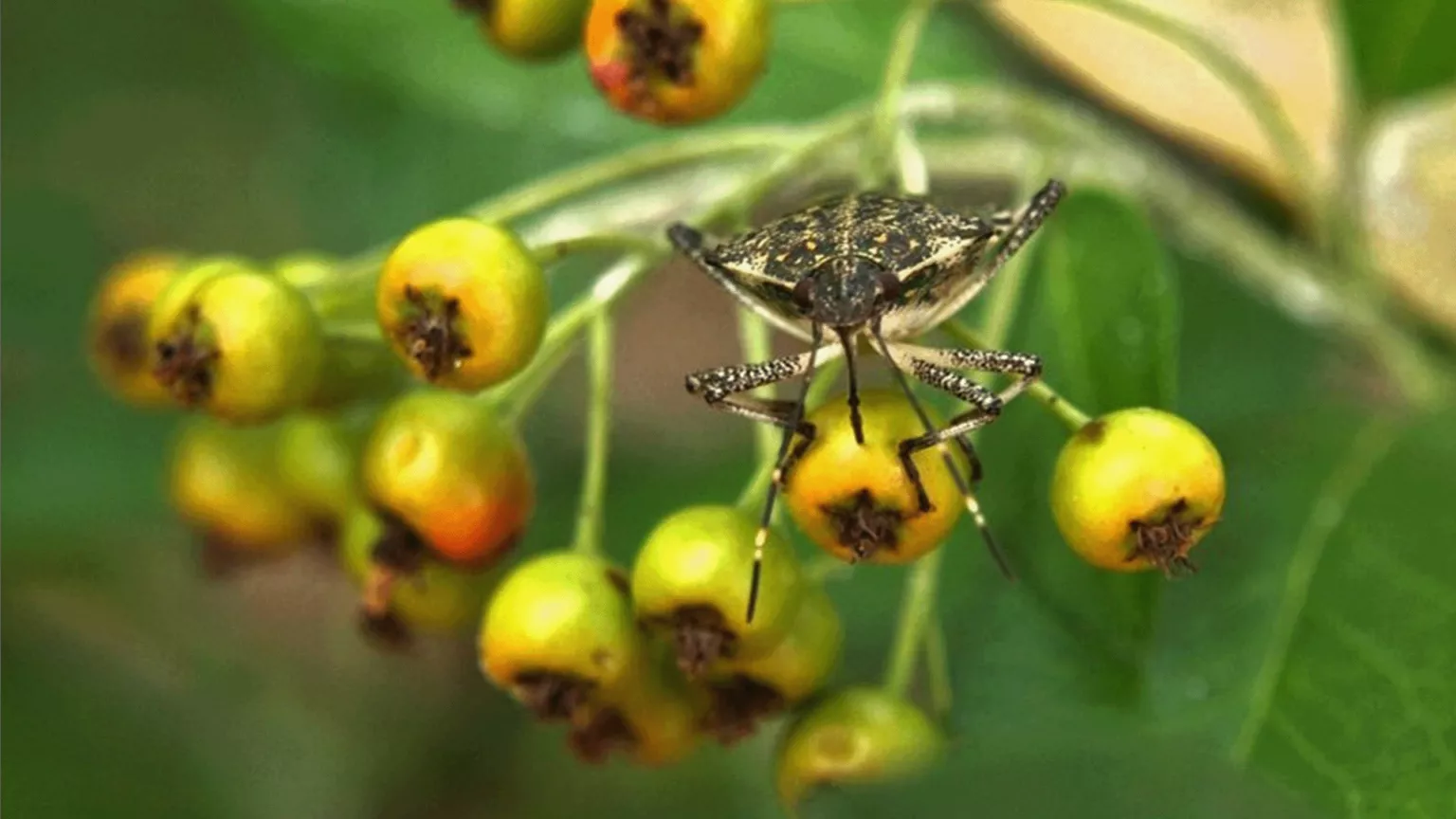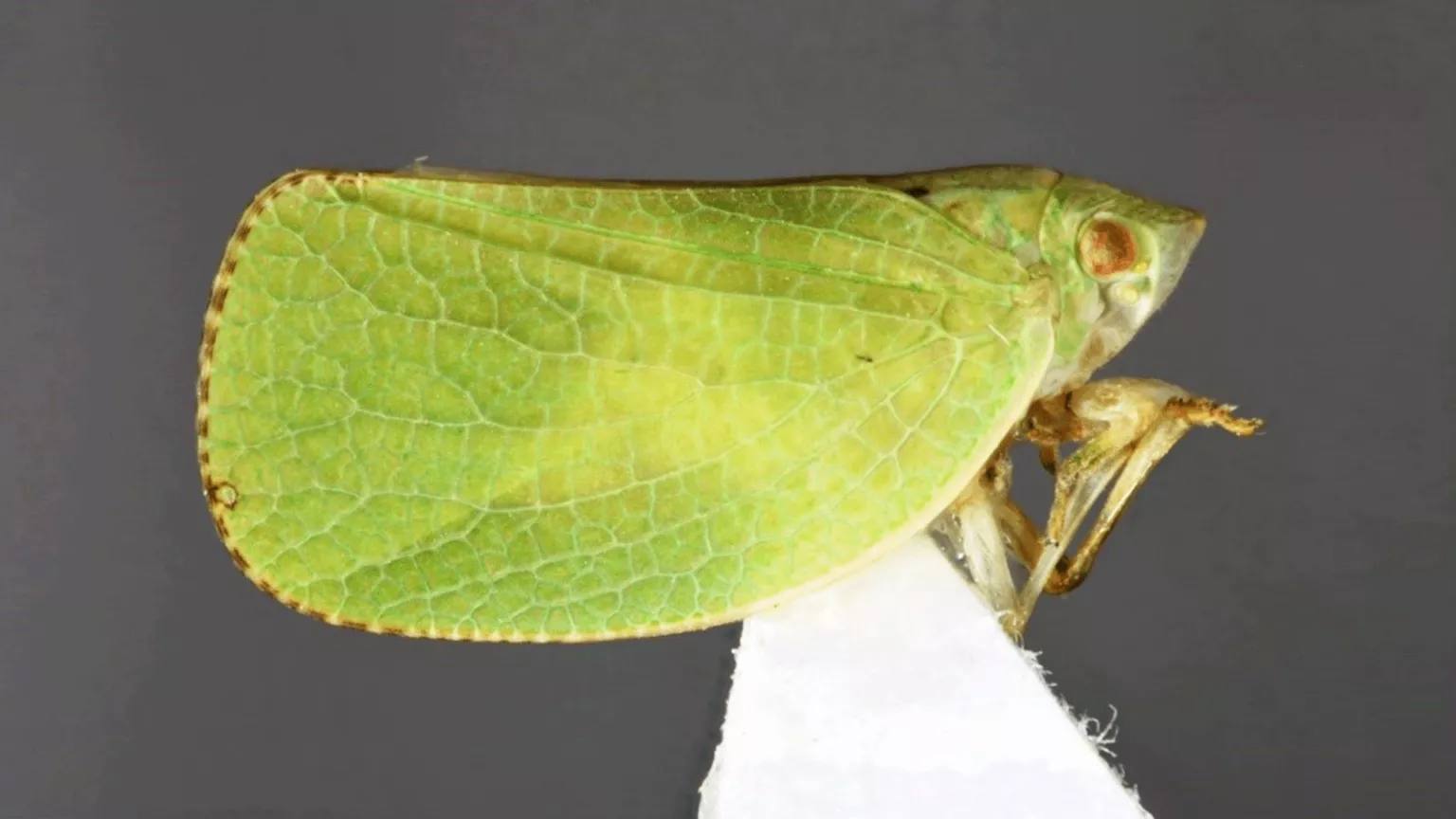ATK NÖVI researchers apply the citizen science method to measure the spread of and damage caused by hemiptera insect species
In addition to climate change, one of the biggest problems affecting ecosystems in temperate zones is the settling and spread of invasive insect species. These species initiate unpredictable changes in the indigenous community and potentially cause, among other things, damage to agriculture. In order to support the prevention and management of problems caused by invasive insects, the ELKH Centre for Agricultural Research Plant Protection Institute (ATK NÖVI) has launched two projects to continuously monitor the spread of these species and the damage they may cause. As part of this work, the researchers are using the citizen science method to involve the general population in measuring the damage to garden cultures caused by the southern green stink bug and the Asian brown marmorated stink bug, as well as a new alien invasive insect species, the bright green acanalonia conica planthopper.

From the 2000s onwards, two invasive stink bug species have begun to appear in Hungary, the southern green stink bug (Nezara viridula) and the Asian brown marmorated stink bug (Halyomorpha halys). Since then, the two species have spread into every region of Hungary, with the latter – with its mass migration for the winter season – causing considerable disturbance in residential areas in many parts of the country.
Both species feed on many types of plant (polyphagic). Of more than 300 plants it is known to feed on, a large proportion are grown as produce in garden cultures, such as the tomato, peppers, apples and cherries. Although data on their harmful effect has been published previously, the extent of the damage currently caused on a national level is not known. Based on word-or-mouth reports, as well as posts and comments made on social media, it is likely that the two species cause the greatest problems to small garden cultures.
The ATK NÖVI researchers request that members of the population who see southern green or Asian brown marmorated stink bugs complete an online questionnaire and if possible send a photo of the insects to the invaziospoloska@gmail.com email address. Identication of the species is assisted by the diagrams found in the questionnaire. Based on the survey, the researchers will have a more precise picture of the damage caused by the two species, and will be able to use the results to develop specific methods to protect against them in future.

Project to map the spread of the bright green Acanalonia conica
In recent years, a new, alien invasive species of Auchenorrhyncha as appeared in Hungary, and is likely to settle in the country. The large-bodied Acanalonia conica is easy to recognise on account of its bright-green colour and broad forewings.
In its original habitat of North America, it develops communities with another alien invasive species, the citrus flatid planthopper, the cause of which is the spread of the two species in overlapping areas and similar lifecycles. The polyphagic bright-green Acanalonia conica is likely to cause most economic damage in vineyards as it lays its eggs by splitting the young buds with its tube-like ovipositor and inserting them in the plant tissue. This can cause scarring and the death of the shoots, as well as increasing the likelihood of bacterial and fungal infections entering through the lesion.
The presence of the bright-green Acanalonia conica in Europe and Hungary has not yet caused problems, but it is important to track its spread due to its potential to cause harm. The researchers request that anyone spotting the species should send the relevant data (town, address and GPS coordinates) and if possible an image of the insect to the hemiptera[at]atk.hu email address.

